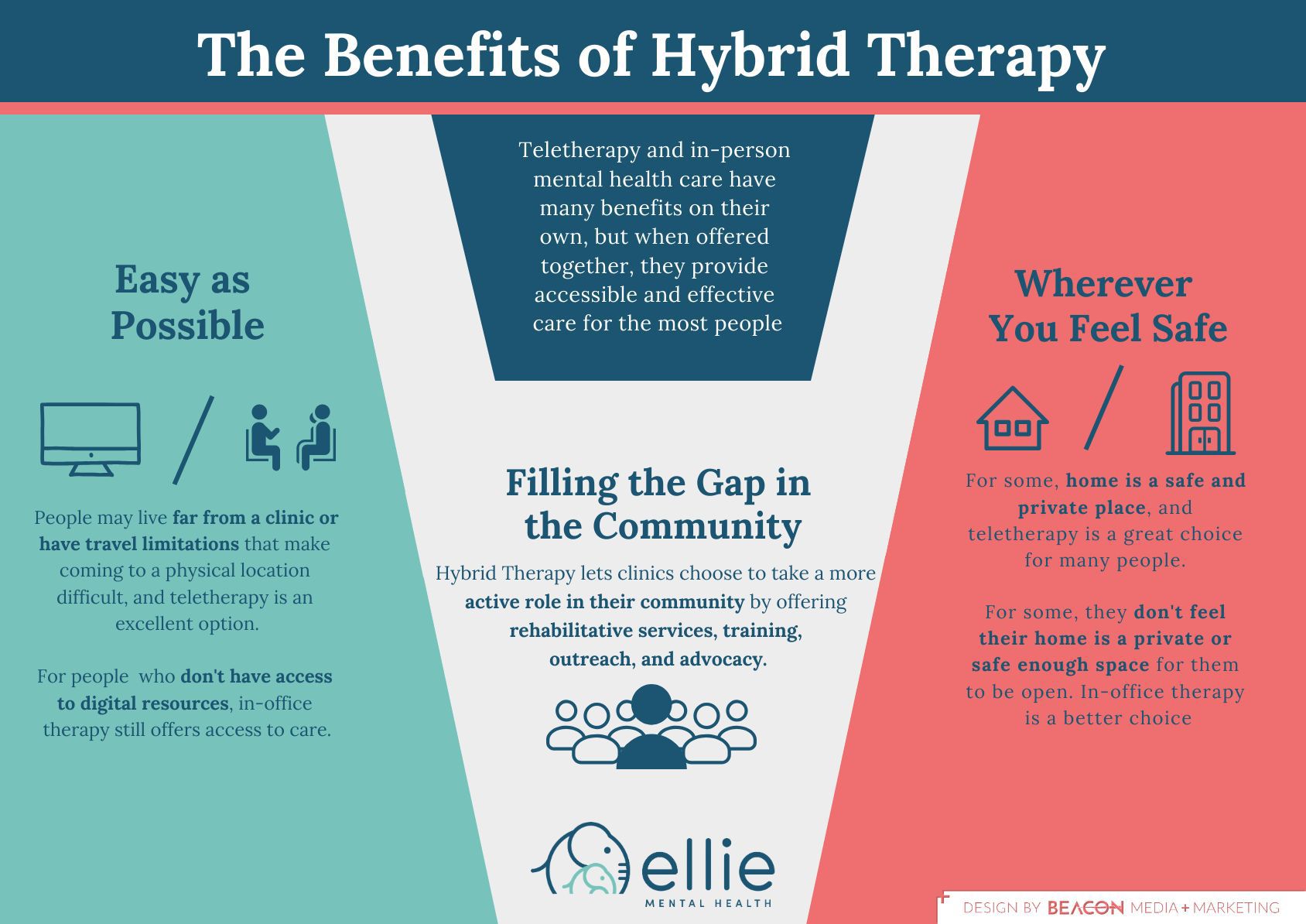Teletherapy has forever changed the way we look at mental health care. A couple of years the word “therapy” may have evoked images of a cushioned chair, bookcases lined with medical textbooks, and a therapist in a white coat jotting down notes on a clipboard.
This picture feels clinical, detached, and if we’re to be honest, intimidating. When being vulnerable and talking about something as personal as our mental health, the last that we want is to feel like we’re being judged or analyzed.
But now, therapy has taken on a whole new look. We’ve come leaps and bounds in the last decade in decreasing the stigma of counseling. Talking about mental health and seeking professional help is starting to be perceived as normal — even, dare we say, cool.
Opening the floodgates to teletherapy over the course of the pandemic has made getting mental healthcare that much easier. Now, you can sit in the comfort of your home, sipping on some tea in your pajamas, and get mental health care and support. And you don’t need to worry about finding a babysitter, planning your commute, or struggling with the anxiety that might come with seeing a provider in person.
However, teletherapy isn’t for everyone. While the big push toward virtual care options has increased access to care for many, there are still some benefits of in-person therapy that can’t be ignored — like more easily picking up nonverbal communication cues and having a safe place to talk away from home. And in-person therapy can be just as comfortable and laidback as teletherapy.
That’s why at Ellie Mental Health, we prioritize hybrid counseling for our clients. We want to give people the option to talk with us virtually if that’s what is most comfortable and convenient for them, but we know the value that in-person care provides. By offering a hybrid of in-person therapy and teletherapy at each location, we strive to produce better health outcomes and establish the best relationship possible with everyone who comes to us for care.
At Ellie, we offer in-person, virtual, and in-home options, so you’re sure to find an option that meets your needs. Call us to get matched with a local provider today.
Should Mental Health Providers Continue Providing In-Person Care?
Since the COVID-19 pandemic pushed providers and clients to quickly adapt to virtual care, both parties have been singing the praises of teletherapy. There are many reasons why online therapy has quickly grown in popularity and is here to stay:
- It improves access: Widespread, equal access to mental health services has been a longstanding issue. Less than half of adults with a mental health issue get treatment. For people who live in remote locations or who have busy schedules, the flexibility of online counseling removes the hassle of commuting to an office and sitting in a waiting room.
- It increases privacy: While people are more open to talking about mental health than in the past, there’s still much work left to completely destigmatize therapy. With in-person therapy, people may feel anxious about potentially running into someone they know in the waiting room or being seen walking in.
- It decreases no-shows: Going to therapy can make people anxious. Especially if it’s the first time. Online therapy can feel less intimidating and increases the chance that people will show up for their appointment. One study showed that the no-show rate was 7.5% for telehealth medicine during the pandemic, which was much lower than the 36.1% no-show rate for in-office visits.
Many researchers, therapists, and clients vouch for teletherapy—saying that is just as effective as in-person care. And online therapy is typically the same cost as in-person appointments and is covered by many insurances.
With such a high demand for mental health online counseling services, some providers are taking a completely virtual route. From small practices to large mental health companies, there has been an increase in providers who don’t have an actual physical office location and only treat clients online. While there is definitely a market and benefit for these services, there are several reasons why we still need in-person care options.

The Benefits of Hybrid Counseling
Teletherapy and in-person counseling both have many benefits on their own, but when offered together, they provide accessible, effective care for most people.
Integrating Community-Based Care
When a mental health practice has a physical location, it has the potential to do more than just help individuals. Even a small practice caters to its entire local community by providing care to people close to home, and therapists can more easily communicate and work alongside other local health providers and mental health providers if necessary. Additionally, mental health clinics can choose to take a more active role in their community by offering rehabilitative services, training, outreach, and advocacy.
Removing Barriers to Access
Both in-person counseling and teletherapy come with their own set of barriers. As we mentioned earlier, people may live outside city limits or have limitations that make commuting to a physical location difficult. On the other hand, teletherapy often takes place over video chat. This requires people to be digitally savvy and have access to reliable internet service.
Unfortunately, poor internet access is still a major issue In the United States with about a quarter of households lacking a home internet connection. And this lack of broadband access disproportionally affects people who live in rural areas, are in a lower income bracket, or are Black, Latino, or Indigenous. Additionally, people who are unfamiliar or uncomfortable with digital technology may struggle to use teletherapy programs. Offering in-person ensures people who don’t have access to digital resources can still access care.
Offering Care Away From Home
While some people love doing therapy from home, some people get the best results in a fresh, neutral space outside their house. Additionally, some people may struggle to find a quiet, private space in their homes where they feel comfortable being vulnerable. And, of course, not everyone’s home is a safe space. Having the option to seek help away from their living space allows people to seek care without disclosing that information with a spouse, parents, or other household members.
Get Started With Hybrid Counseling in Your Location
When it comes to your mental health care, we believe that choice matters. Whether you want to meet with us online or in person is up to you — and we promise we won’t judge you if you want to come into our clinic in your pajamas. Our clinics are designed to feel cozy, safe, and familiar.
And our amazing providers aren’t the peer-over-the-clipboard, silently judgy types. We’re here to get to know the real you and help you live a life you love. No matter your background, your style, or your feelings about therapy, we promise to accept you as you are and provide you with the compassionate care you deserve.
Ellie Mental Health takes an innovative approach to mental health care. Speak with an Ellie specialist to choose your preferred method of care and get matched with a provider in your area.


